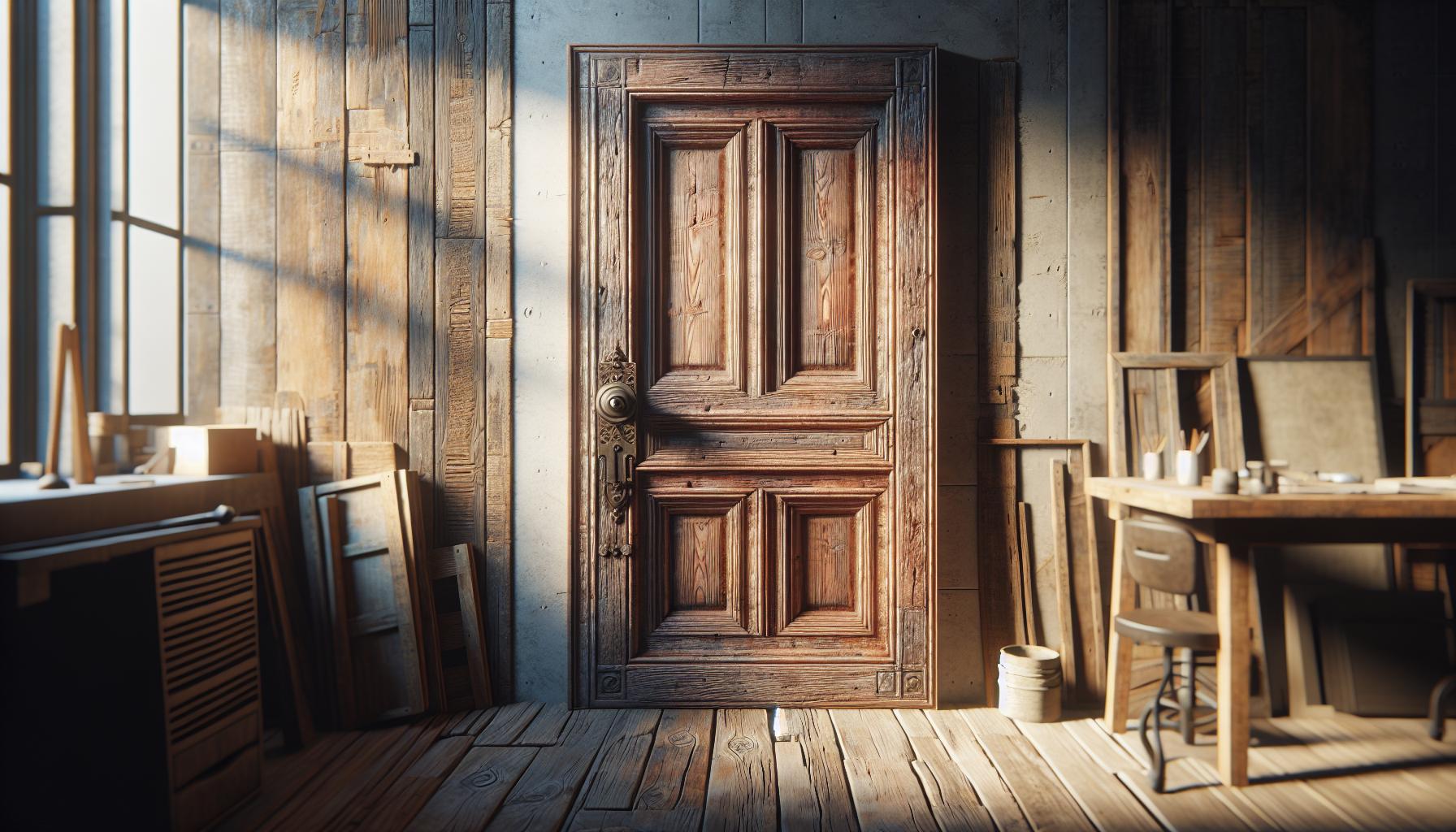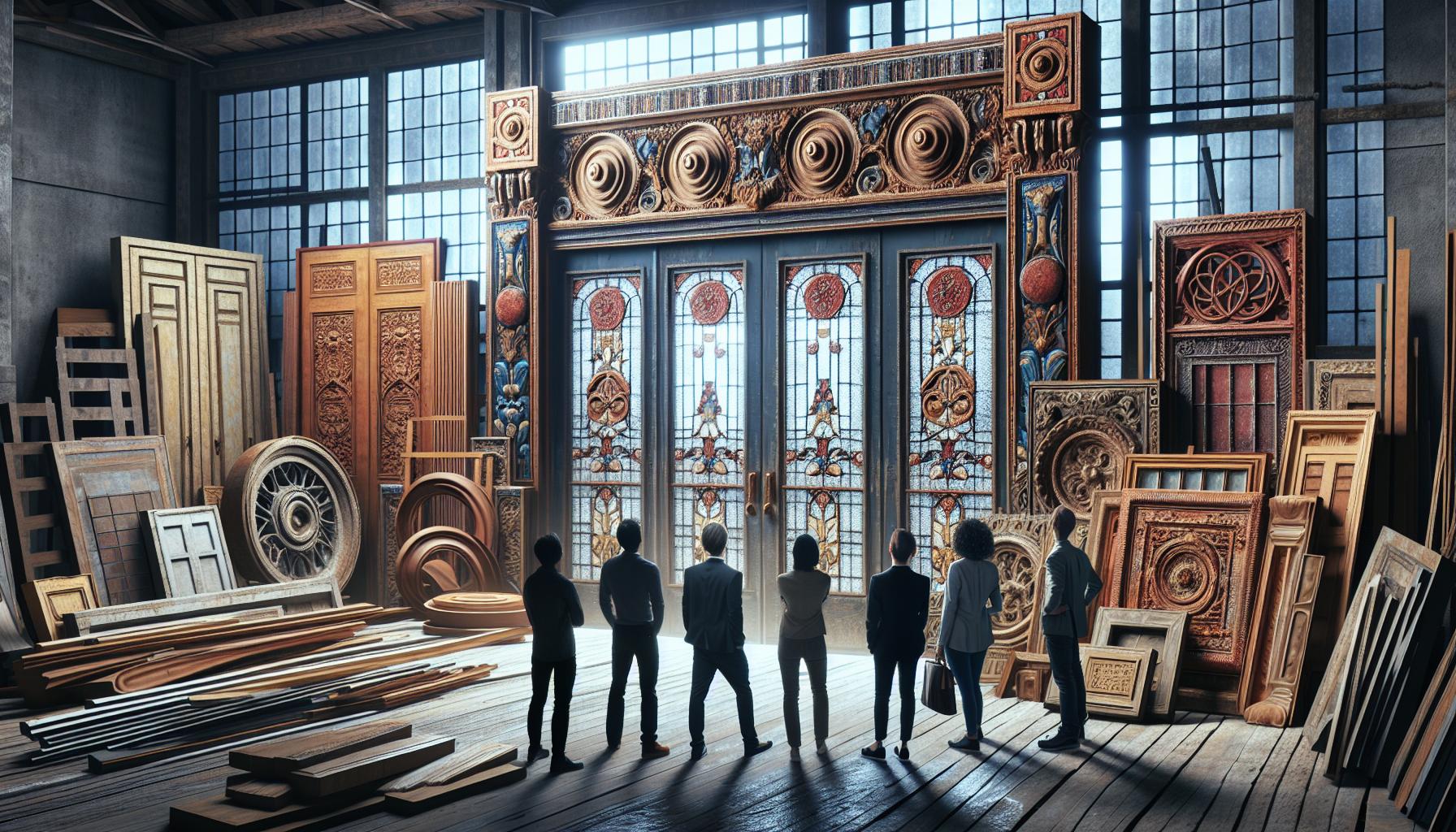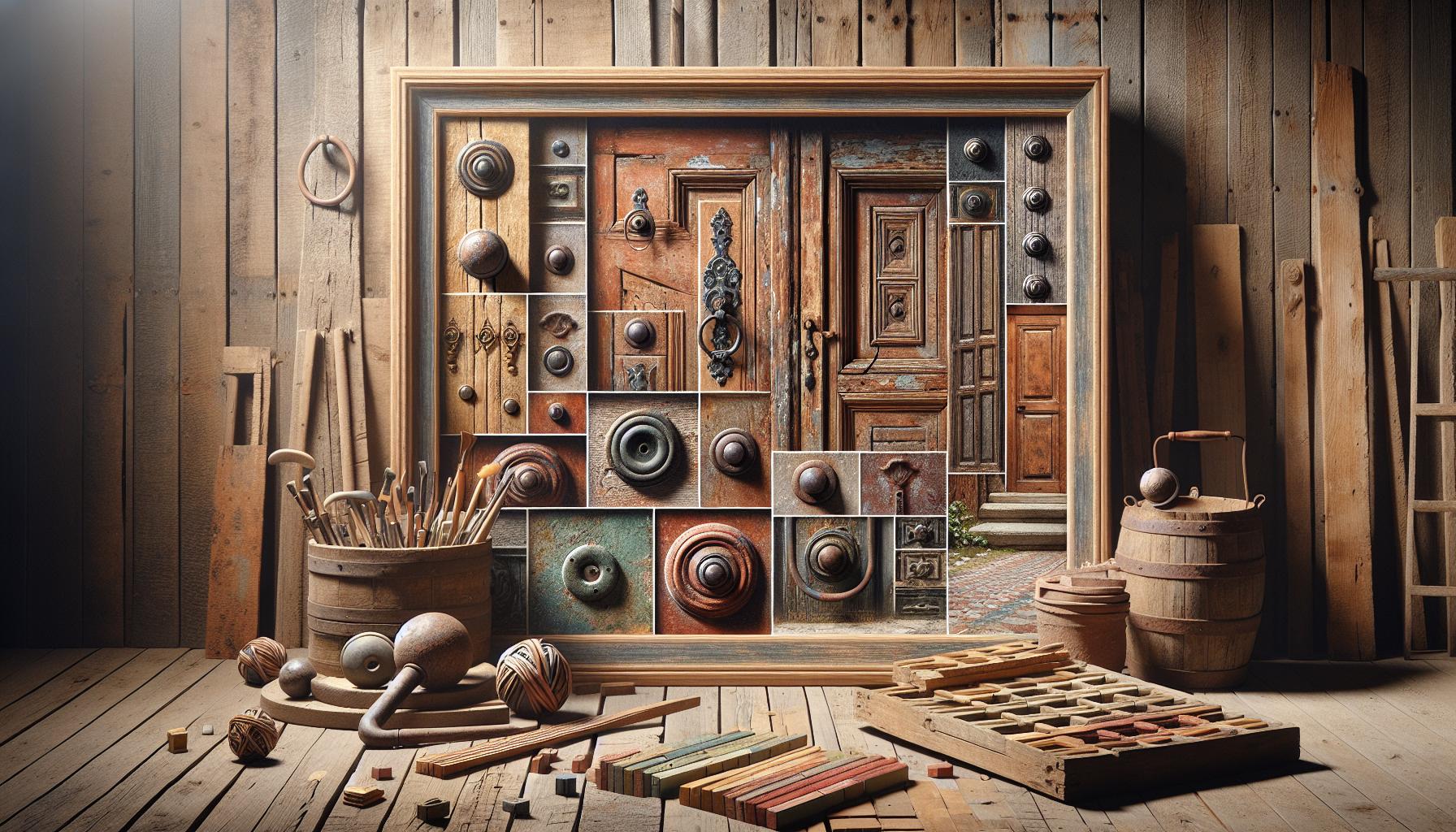In a world where cookie-cutter designs reign supreme, Schiller’s architectural and design salvage photos stand out like a quirky uncle at a family reunion. These stunning visuals capture the beauty of reclaimed materials and forgotten treasures, breathing new life into the mundane. Who knew that a rusty doorknob or a weathered beam could spark so much joy?
With each click, viewers embark on a journey through time, exploring the stories behind these salvaged gems. It’s not just about aesthetics; it’s about sustainability and creativity. Schiller’s work invites everyone to rethink what’s possible in design, proving that one person’s trash can truly be another’s architectural masterpiece. So, buckle up and get ready to be inspired—these photos might just convince you to start your own salvage project (or at least take a second look at that old barn in the backyard).
Schiller’s Architectural and Design Salvage Photos
Schiller’s architectural and design salvage photos capture the essence of reclaimed materials and their rich histories. These images offer a visual narrative that showcases the transformation of overlooked objects into valuable design elements.
Historical Significance
Reclaimed materials hold stories that span decades or even centuries. They reflect architectural trends and craftsmanship from different eras, providing a glimpse into the past. Items like weathered doors and antique fixtures reveal cultural narratives, allowing viewers to trace their origins. Salvage photos highlight the importance of preservation, emphasizing how these elements contribute to sustainable development. Documenting the history behind each piece inspires viewers to appreciate architectural heritage and recognize the value of saved artifacts.
Artistic Value
Artistic expression thrives in the realm of salvaged materials. Schiller’s photos illustrate how reclaimed items can blend raw authenticity with creative vision. Rusted doorknobs and timeworn beams become focal points in design, showcasing imperfections that enhance their aesthetic appeal. The unique qualities of these items inspire designers to forge new paths, encouraging innovation in interior and exterior spaces. Each image reflects the intrinsic beauty of impermanence, demonstrating that discarded objects can achieve remarkable artistic heights. Schiller’s work invites others to explore the limitless possibilities found in salvage.
Key Features of the Photos

Schiller’s architectural and design salvage photos highlight distinct features that captivate viewers and convey deeper narratives. Two significant aspects include composition techniques and the use of color and light.
Composition Techniques
Strategic framing showcases the unique characteristics of each salvaged item. Various perspectives spotlight intricate details like rusty doorknobs and weathered beams. Negative space plays an essential role, emphasizing the beauty that often goes unnoticed. Additionally, layers within the photos create depth and intrigue, drawing the viewer’s eye to the complexities of reclaimed materials. Arrangement variations deliver different moods, from rustic charm to modern elegance. Each composition tells a story, encouraging viewers to appreciate the craftsmanship behind the salvaged pieces.
Use of Color and Light
Vibrant colors complement the raw textures of salvaged materials. Natural light enhances the visual appeal, revealing the nuances of aging and patina. Shadows introduce a dynamic element, adding dimension and interest to the photographs. Warm tones evoke a sense of nostalgia, while cooler hues create a contemporary feel. Moreover, contrasts in brightness highlight key features, directing attention to the artistry present in these items. This intentional use of color and light transforms ordinary objects into striking focal points, inviting viewers to explore their hidden potential.
Impact on Architectural Preservation

Schiller’s architectural and design salvage photos play a pivotal role in elevating the importance of architectural preservation. They highlight the beauty and potential of reclaimed materials while fostering a culture of sustainability.
Raising Awareness
Visual storytelling in Schiller’s photos raises awareness about the significance of conserving architectural history. It encourages discussions surrounding the environmental impact of demolition and waste. By showcasing unique materials, these images captivate audiences and inspire them to appreciate the artistry behind old structures. Conversations about salvaged items emphasize their stories and craftsmanship, encouraging people to value preservation efforts. As awareness spreads, communities begin to recognize the possibility of reusing materials creatively, leading to a stronger commitment to protecting architectural heritage.
Inspiring Restoration Projects
Schiller’s evocative images inspire numerous restoration projects across various communities. Each photo illustrates the transformative potential of salvaged materials, igniting creativity in architects and designers. Such inspiration leads to innovative uses of reclaimed items, resulting in stunning renovations that celebrate history while embracing modernity. Designers look to Schiller’s work to incorporate salvaged elements into new projects, merging antique beauty with contemporary design. The process evolves as more restoration initiatives emerge, fueled by a shared vision of sustainability and preservation, emphasizing the irreplaceable value of architectural heritage.
Concluding Thoughts on Schiller’s Work

Schiller’s architectural and design salvage photos significantly impact perceptions of reclaimed materials. Each image speaks volumes about forgotten treasures and the creativity infused into salvAGED items. Rusty doorknobs and weathered beams become icons of sustainability rather than mere remnants.
Historical contexts emerge through these visuals, revealing the narratives attached to various materials. Viewers gain insights into architectural trends and craftsmanship from different eras, reinforcing the need for preservation. Appreciation for cultural origins thrives as Schiller’s work highlights the artistic value of salvaged elements, which blend raw authenticity with visionary creativity.
Composition techniques stand out as a hallmark of Schiller’s photography. Various perspectives and strategic framing spotlight intricate details, encouraging viewers to notice the often-overlooked beauty. The intentional arrangement of items crafts unique moods, while negative space enhances visual storytelling.
Natural light and vibrant colors amplify the appeal of these photos. Aging and patina showcase the nuanced beauty that older items possess, turning them into striking focal points. Shadows and highlights contribute depth, transforming ordinary objects into captivating icons of artistic design.
Schiller’s work fosters important conversations around architectural preservation. By highlighting unique materials, he raises awareness of the environmental impacts of demolition. Communities become inspired to value preservation efforts while igniting numerous restoration projects, illustrating the transformative potential of salvaged materials.
The merging of antique beauty with contemporary design showcases innovative uses of reclaimed items. Schiller’s evocative imagery encourages a collective commitment to sustainability and the protection of architectural heritage. His work not only inspires individual salvage projects but also cultivates a broader appreciation for the possibilities within overlooked treasures.
Schiller’s architectural and design salvage photos serve as a powerful reminder of the beauty and potential within reclaimed materials. Each image tells a story that connects viewers to the past while inspiring future creativity. By highlighting the artistic and historical significance of salvaged items, Schiller encourages a deeper appreciation for preservation and sustainability in design.
His work not only transforms perceptions but also ignites a passion for innovative restoration projects. As communities engage with these evocative visuals, they’re prompted to rethink the value of discarded objects. Schiller’s photography ultimately fosters a culture of creativity and environmental responsibility, inviting everyone to explore the remarkable possibilities that lie within forgotten treasures.



